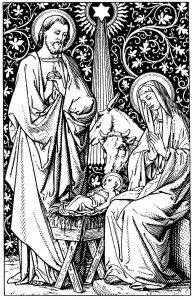A SOLSTICE SONG
The Briefest of Christmas Meditations
22 December 2013
James Ishmael Ford
First Unitarian Church
Providence, Rhode Island
Immediately before coming here to Providence not quite six years ago, I served for a number of years at our Unitarian Universalist congregation in Newton, Massachusetts. The church building in Newton is a masterpiece designed by the renowned Gothic revival architect Ralph Adams Cram. In fact I thought I’d never serve in a building quite so magnificent again.
As you know, it turned out I was wrong. We are gathered together in what I have to call a classic New England Meeting House – on steroids. Truly, this is one of the most beautiful buildings within our denomination. And sitting within the sanctuary here there can be no doubt our Unitarian roots go deep into New England Congregational soil.
Not quite so with the church in Newton. There, visitors would often ask me when it was we purchased the building from the Episcopalians. It was a Gothic cathedral in miniature. Not that small you understand, the sanctuary could seat nearly five hundred. It was a perfect adaptation of the English Perpendicular style. Among the traditional appointments, it was filled with stained glass windows.
However, in looking at those windows you could, if you were theologically sophisticated, discern how there was something not quite in sync with the main stream of Christianity, a pointing to the fact it was built for Unitarians. The most telling point, beyond the lack of crucifixes, was how the windows that featured Jesus were all images of Jesus the good rabbi, the teacher, starting with the great window above the altar, and yes, while we liked to call it a chancel table, it was pretty much obviously, seven steps rising to the ornately carved table placed against the back wall, an altar. And above that altar, these days featuring a large brass chalice, there was a lovely stained glass image of Jesus with all the little children.
While there were no death and resurrection images anywhere in the building, there was one mythic celebration portrayed in one of the side windows. It was a really beautiful nativity scene. And that’s what I want to reflect on today, if briefly.
As my fellow online columnist at the UU World, Doug Muder once observed, “Unitarians didn’t just inherit Christmas from the orthodox Christian sects…” Instead, as Doug points out, “To a large extent we invented it, or (more accurately) reinvented it.”
The Puritans read the scriptures closely and they saw the meager passages referring to Jesus’ birth placed it most likely in the spring. They also knew their history and how Christmas wasn’t attached to December 25th until the early fourth century as an attempt to control the wild and wildly popular celebration of Sol Invictus, the birth of the Unconquerable Sun. In short Christmas was a thinly Christianized celebration of the winter solstice. And so once the Puritans were in charge, they outlawed the holiday.
Then in the opening decades of the nineteenth century a number of Unitarians and Universalists went to study in Germany, which was the hotbed of intellectual inquiry at that time. There they saw Christmas trees and Yule logs, pretty much the whole of what we think of as the trimmings of Christmas celebration. It was only in 1832, when the Unitarian minister Charles Follen set up the first Christmas tree in New England. In short, Christmas here is a Unitarian holiday.
You’re welcome.
Now, there was a reason we did this beyond the joy of sticking our thumb in the eye of the man. Unlike Easter, tied up as it is with stories of mythic events playing out on some cosmic scale, Christmas is about a child being born and how that tiny, tiny event is our human way to hope and joy and possibility. The bells and whistles, the angels and wise men, lovely as they are, are window dressing. The story at the heart of the matter, of Christmas, is the miracle of possibility discovered in a single birth.
It’s a human thing.
To be born is to be born with a world of possibility.
And so here we are today. It is our charge, to us, for you and me, to remember that hope which comes with a human birth, wherever that birth takes place.
Deep responsibilities are revealed. Our profound connections to each other and to this world are presented like those gifts of the magi.
Hope birthing into this poor world.
Hope.
Hope against all odds.
Hope.
In moments of happiness let us remember it.
In moments of sorrow, let us not forget it.
We are, all of us, called by our humanity, by our birth, to hope.
And this is the time in the cycle of our lives, when we as a people pause in the midst of all the things that would distract us, all we need do is remember the birth of a child.
That is Christmas.
And, in this pausing and noticing how can we not experience the trembling of possibility, the birthing of one more chance, a new dawn of hope for our selves and for this world?
Christmas.
So simple.
So profound.
Amen.













